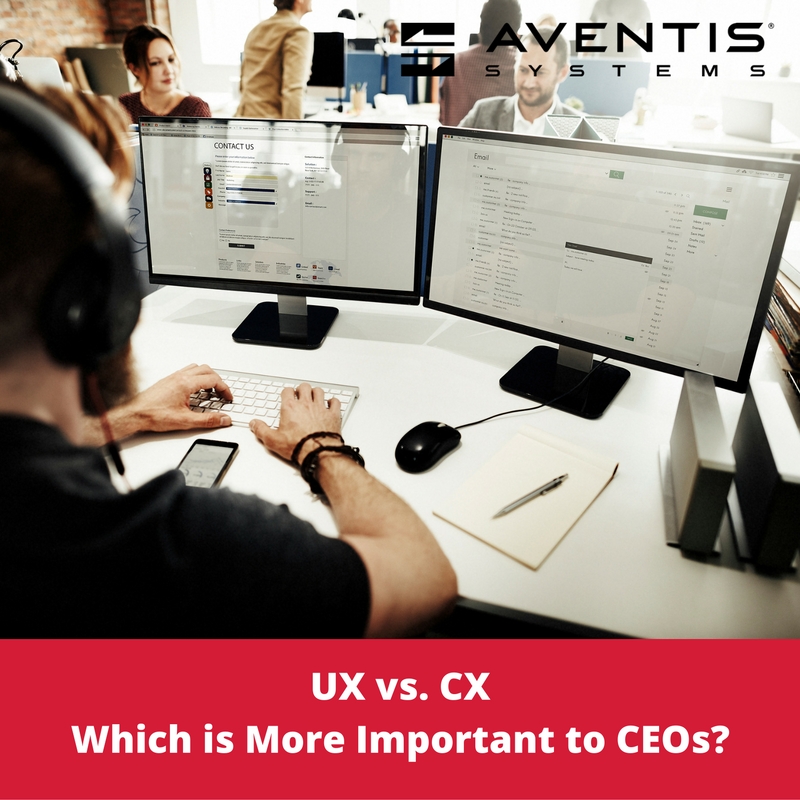UX vs. CX - Which is More Important to CEOs?
by Hesam Lamei
User experience (UX) and customer experience (CX) are both vital to business success, but what are their differences and which is more important from a CEO’s perspective?

UX pertains to the usability of a product or website. UX is one part of the overall CX which includes every interaction a customer has with a company. For example, imagine a customer who has difficulty fulfilling an order on a retail website so the customer calls the company to order over the phone. It can be presumed that this customer had a negative UX but overall neutral CX since the order was ultimately placed successfully.
The intricacies of the relationship between UX and CX are very important for CEOs and leadership teams to understand. CX is a key differentiator in purchase decisions as 86 percent are willing to pay more for a better experience. Furthermore, ignoring UX, puts a website or application at risk of losing 90 percent of users.
A CEO's enthusiasm and prioritization of CX and UX is incredibly important as it echos throughout the leadership team which then resonates throughout management teams, and finally is felt by those working directly with customers, i.e. the CX / UX team. Customer service and technical support are difficult endeavors so knowing leadership understands and supports their roles will help motivate them to strive for continuously positive encounters with customers.
The amount of personnel and budget investment required for CX and UX can be significant, and the indirect return on investment (ROI) makes it a hard pill to swallow for many CEOs of small and midsize businesses. Because the ROI is difficult to measure, CX / UX investment requires an understanding of the power of word-of-mouth and brand loyalty. As mentioned above, too many customers could be lost if CX and UX are ignored.
Recently, my company designated five core company values, and customer experience tops this list. Being a value-added reseller in the IT industry, our customer experience is part of the value we add. We guide our customers before, during, and beyond equipment lifecycles. This customer experience and technical supports helps give us a competitive edge and allows customers to look beyond price comparisons to make their purchase decisions.
Within our business model, there several key processes that allow us to provide an overall exceptional CX within our industry. First, our procurement and inventory management processes allow us to offer a JIT inventory model for our customers, offering components and full-fledged systems to be built and shipped same-day. Second, we have system build processes that allow us to deploy hundreds of desktops from scratch and with operating systems installed. These same processes also allow us to update firmware and bios on hundreds of servers at a time. Typically an IT buyer would need to go to an original equipment manufacturer’s website, select their model, and go through a multi-step process while with our company it requires just one call.
In terms of customer interaction at our company, our technical support processes allow us to speak with customers within two minutes of calling into support, troubleshoot their issues, and ship replacement parts same-day. Additionally, our operational processes allow us to separate our internal network so that customers can access their servers, upload, download, and configure them however they like before we ship to their site.
Even though we have several processes to ensure CX is prioritized, we do have some challenges. Our eCommerce website presents a number of challenges to ensure a positive UX because in our line of business we sell to different types of buyers, i.e. businesses, government organizations, and consumers, and each type of buyer has its own set of requirements as users. Our vast amount of commodity products also presents complex challenges to keep our inventory updated to provide accurate information regarding build times and to manage delivery expectations.
In conclusion, the experience of customers should be of the utmost importance to CEOs and leadership teams at businesses of all sizes because it is vital to business growth. Customer experience, and therein UX, requires investment, understanding of the power of word-of-mouth and brand loyalty, and enthusiasm on the CEO’s part.